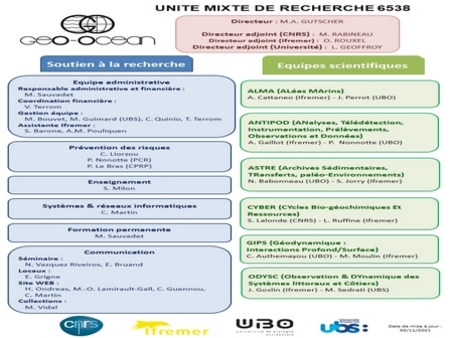The off-axis neo-volcanic zone
We reached the neo-volcanic zone on Saturday afternoon. We began by the first rock dredging operation. Only a few blocks of basalt were recovered. Members of the rock team then referenced, photographed, described and prepared the samples for preliminary analyses on board and future analyses ashore.
The indications of the initial results of cartographic data and rock samples are that this area is exceptional.
On an ocean crust over 40 Ma, we discovered very recent magmatism. The presence of amphiboles in the lava and the richness of certain elements (K2O, Ti, Zr, Nb, Ba, Sr) show that this magmatism is very different from that which usually initiates on the dorsal axis. The geologists are already very enthusiastic as to what future analyses back in the lab in Brest will reveal.
The CTD probe was first deployed Saturday night. Unfortunately, some bottles malfunctioned and closed incorrectly. Further to this deployment, adjustments were made to improve deployment thereafter. Analyses of the samples from this area showed no clear geochemical abnormalities in the water column.
Ulyx dived for a second time Sunday morning to test the multibeam echosounder. The AUV was able to reach the bottom, but unfortunately, once on the seabed propulsion problems meant that no data was acquired.
The Pourquoi Pas? is now heading towards cluster 6 of the exploration area which should be reached on Wednesday morning.







